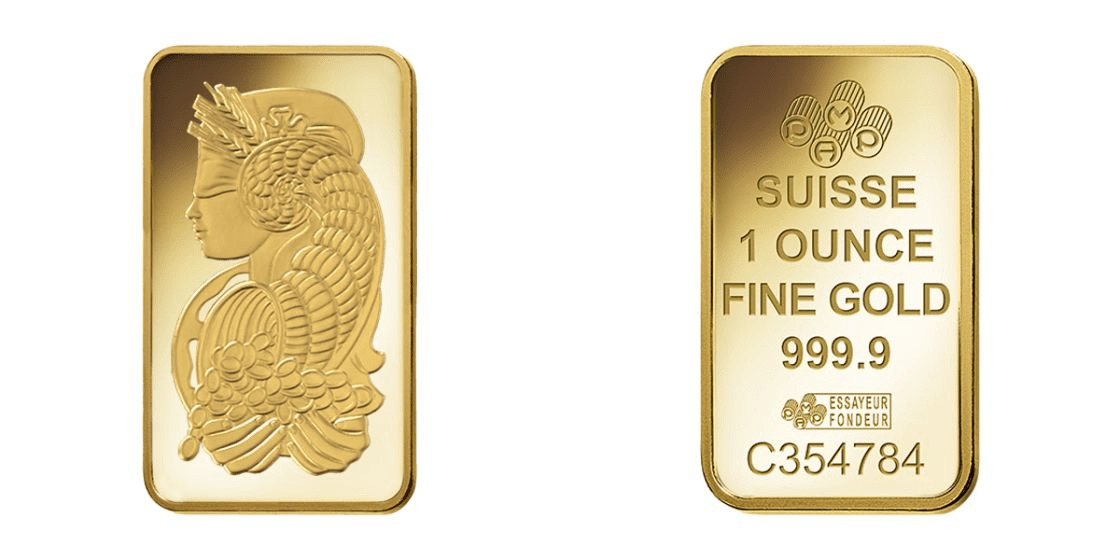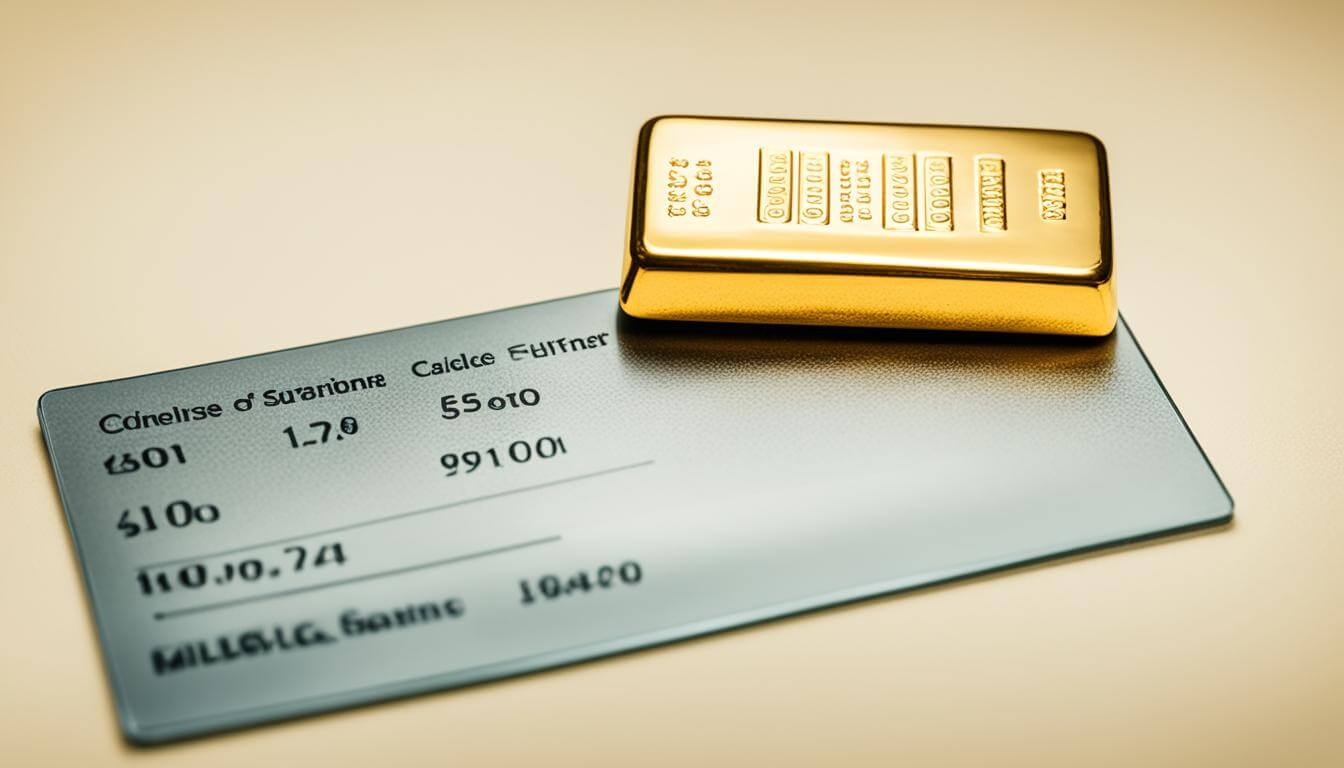Actual Weight Of An Ounce Of Gold Revealed

Gold is a precious metal that has captivated and fascinated people for centuries. It is highly sought after for its beauty, rarity, and inherent value. However, when it comes to measuring gold, things can get a little confusing. You might be wondering, how much does an ounce of gold really weigh?
To answer that question, we need to delve into the world of gold measurements. Gold is typically measured in what is known as a Troy Ounce. This is different from the standard (Imperial) Ounce that we are familiar with. The Troy Ounce is used as a standard measurement in the gold trade and is part of the Troy weights system for precious metals.
A Troy Ounce is equivalent to 31.1034807 grams, while a regular Ounce is equal to 28.35 grams. So, as you can see, there is a slight difference in weight between the two. This variation in weight can actually have an impact on the size of finished gold products, such as jewelry.
Understanding the actual weight of an ounce of gold is essential when it comes to buying, selling, or valuing gold. Whether you are a gold investor, an aspiring jeweler, or simply intrigued by the allure of gold, knowing the accurate weight of gold can help you make informed decisions.
In the following sections, we will explore the significance of gold and its measurement, the difference between ounces and troy ounces, measuring gold purity, tips for buying gold, and when and how to buy gold. By the end of this article, you will have a comprehensive understanding of gold and the factors to consider when dealing with this precious metal.
The Significance Of Gold And Its Measurement
Gold holds immense value, not only for its rarity but also for its malleability and exquisite beauty. Throughout history, gold has been cherished and sought after, symbolizing wealth and royalty. Understanding the measurement of gold is essential for accurate valuation and trading practices.
Gold is measured using the Troy ounce, a unit of weight that originated in the city of Troyes, France. A Troy ounce is slightly heavier than a standard ounce, with 1 Troy ounce equivalent to 31.1 grams, while a standard ounce weighs 28.349 grams. This distinction in measurement can have a significant impact on the size and value of finished gold products, such as jewelry.
Aside from Troy ounces, gold can also be quantified in grams or kilos, providing flexibility for different trading needs. When gold is not used in the production of jewelry or coins, it is commonly minted or cast into gold bullion bars. Gold bullion bars, also referred to as gold bricks, come in various sizes to accommodate different investment preferences. The most common gold brick sizes range from 1 gram to 400 troy ounces.
To further appreciate the significance of gold measurement, it is essential to understand the various forms in which gold is traded and valued. This knowledge allows for informed decision-making and successful participation in the gold market.

Understanding The Difference Between Ounces And Troy Ounces
When gold traders refer to ounces, they are actually referring to troy ounces. A troy ounce is equal to 31.1 grams of gold, while a standard ounce weighs less at 28.349 grams. This slight difference can significantly impact gold calculations, especially when dealing with large amounts of gold.
It is essential to use the appropriate unit of measurement to ensure accurate valuations and avoid potential losses. When conducting gold calculations, always consider the weight in troy ounces rather than the standard ounce. Miscalculations can lead to errors in determining the value of gold holdings or making informed investment decisions.
In addition, it is worth noting that different regions may have their own measurement systems for gold, such as grains, pennyweights, tolas, or taels. Understanding these different systems is important for accurate gold measurements and transactions in specific markets.
By understanding the difference between ounces and troy ounces, gold traders and investors can ensure precise calculations and valuations, leading to more informed decision-making in the gold market.
Measuring Gold Purity And Buying Tips
When it comes to investing in gold, understanding its purity is crucial. Gold purity is commonly measured using the term “karat,” which indicates the ratio of gold within an item. Pure gold is 24 karat, while lower karat ratings signify the presence of other less valuable metals or alloys. This knowledge is essential for making informed decisions when buying gold.
For individuals considering gold investment, purchasing physical gold is highly recommended. Physical gold offers greater security and flexibility as it can be stored or sold at any time. When buying gold, opt for gold with a purity of at least 99.5%. This level of purity ensures that you are investing in high-quality and valuable gold.
When it comes to purchasing physical gold, it is wise to buy in workable sizes. Smaller bars or coins are easier to sell and provide flexibility in terms of reselling options. Additionally, comparing prices from reputable sellers is crucial to ensure you are getting the best value for your investment. Always operate within the legal framework governing gold transactions.
Summary Of Measuring Gold Purity And Buying Tips:
- Gold purity is measured in karats.
- 24 karat gold is pure gold, while lower karat ratings indicate the presence of other metals or alloys.
- Buying physical gold provides security and flexibility.
- Look for gold with a purity of at least 99.5%.
- Purchase gold in workable sizes, such as smaller bars or coins, for easier reselling.
- Compare prices from reputable sellers to ensure a fair deal.
- Operate within the legal framework governing gold transactions.

When And How To Buy Gold
The best time to buy gold is when prices are low and the market is favorable. Monitoring key factors such as central bank reserves, the value of the US dollar, jewelry demand, and gold production can provide valuable insights into potential shifts in gold prices. By staying informed and using these indicators, investors can make well-informed decisions when it comes to gold trading and investment.
When buying gold, it is crucial to choose a reputable seller who specializes in gold trading. Comparing prices from different sellers ensures that you get the best possible deal. Additionally, it is important to comply with the laws and regulations of your jurisdiction to ensure a legal and secure transaction.
Safely investing in gold involves buying physical gold and ensuring its purity and authenticity. Physical gold, such as gold bars or coins, offers greater security and flexibility compared to other forms of investment. It is recommended to purchase gold with a purity of at least 99.5% to ensure its value and quality.
Investing in gold can be a rewarding venture, but it requires careful consideration and knowledge of the gold market. By following these guidelines and making informed decisions, investors can seize the best opportunities and navigate the gold trading landscape with confidence.
Conclusion
Investing in gold is a promising opportunity that requires careful consideration and knowledge of key factors. Understanding the weight of an ounce of gold and its measurement using the Troy ounce system is essential for accurate valuation.
Differentiating between ounces and troy ounces is crucial to avoid miscalculations when dealing with gold. Furthermore, ensuring the purity of gold and following buying tips can significantly contribute to a successful investment.
Timing the market and purchasing from reputable sellers are additional factors to take into account. By adhering to these guidelines, investors can make informed decisions and safely navigate the world of gold investment, maximizing their potential returns.
FAQ
What Is The Actual Weight Of An Ounce Of Gold?
Gold is measured in what is known as a Troy Ounce, which is different from the standard (Imperial) Ounce. A Troy Ounce is equivalent to 31.1034807 grams, while a regular Ounce is equal to 28.35 grams.
Why Is Gold Considered Precious?
Gold is considered precious due to its rarity, malleability, and beauty. It has been used for ornamental jewelry throughout history and is associated with wealth and royalty.
How Is Gold Measured?
The measurement of gold is done using Troy ounces, which originated in Troyes, France, and is slightly heavier than a standard ounce. In addition to Troy ounces, gold can also be quantified in grams or kilos.
What Are Gold Bricks Or Bars Called?
When not used in jewelry or coins, gold is often minted or cast into gold bricks or bars, known as gold bullion. The most common gold brick sizes range from 1 gram to 400 troy ounces.
What Is The Difference Between Ounces And Troy Ounces In Gold?
When gold traders refer to ounces, they are actually referring to troy ounces. A troy ounce is equal to 31.1 grams of gold, while a standard ounce weighs less at 28.349 grams. This slight difference can significantly impact gold calculations, especially when dealing with large amounts of gold.
How Is Gold Purity Measured?
Gold purity is measured using the term “karat,” which indicates the ratio of gold within an item. Pure gold is 24 karat, while lower karat ratings indicate the presence of other less valuable metals or alloys.
What Should You Consider When Buying Gold?
When buying gold, it is recommended to purchase physical gold, as it offers greater security and flexibility. Buying pure gold with a purity of at least 99.5% is ideal. It is also advisable to purchase gold in workable sizes, such as smaller bars or coins, as they are easier to resell. Comparing prices from reputable sellers and operating within the legal framework are also essential considerations.
When Is The Best Time To Buy Gold?
The best time to buy gold is when prices are low, and the market is favorable. Monitoring factors such as central bank reserves, US dollar value, jewelry demand, and gold production can provide insights into potential shifts in gold prices. It is crucial to stay informed and use these indicators to make informed investment decisions.
How Can I Safely Invest In Gold?
Safely investing in gold involves buying physical gold and ensuring its purity and authenticity. It is essential to choose a reputable seller, compare prices, and comply with the applicable laws and regulations of your jurisdiction.
What Factors Should I Consider When Investing In Gold?
Investing in gold can be a lucrative venture, but it requires careful consideration and understanding of various factors. The weight of an ounce of gold is crucial in gold valuation, and it is measured using the Troy ounce system. Measuring gold purity and following buying tips can help ensure a successful investment in gold. Timing the market and buying from reputable sellers are additional factors to consider. By following these guidelines, investors can make informed decisions and safely navigate the world of gold investment.




